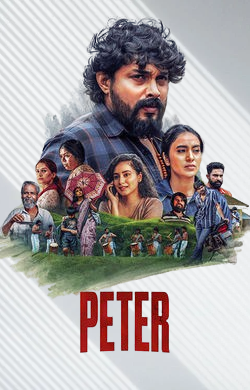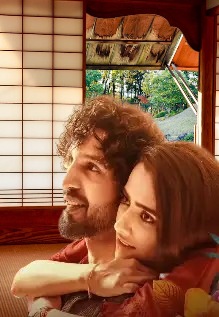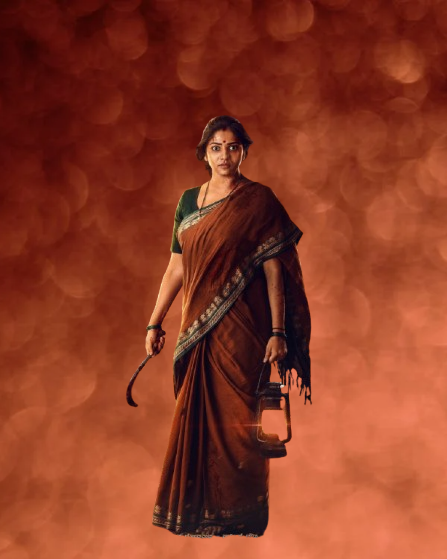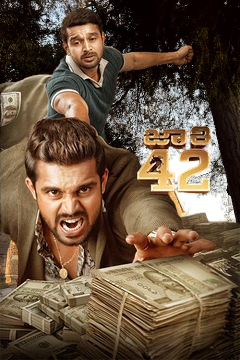Peter Movie 2025 Movierulz Review Details

Peter (2025) Review: Sukesh Shetty’s Directorial Vision Under the Lens
You know that rare movie that lingers after the credits roll? Peter aims for that — a director-first Kannada film that wears Sukesh Shetty’s ambitions on its sleeve.
Overview & Context
As a reviewer who’s covered 500+ films across regional and national cinema, I watch for a director’s fingerprints more than surface-level thrills. Sukesh Shetty writes and directs Peter, and that dual role shapes the film’s voice throughout.
Insight: Shetty’s double duty suggests a cohesive authorial voice.
Takeaway: Expect a film that’s personal and stylistically consistent.
Directorial Choices: Tone, Pacing, and Camera
Choice of tone: Shetty opts for a measured dramatic tone rather than mainstream beats, letting silences breathe and small gestures matter.
Pacing: The film favors slow-burn revelation over immediate payoff, which will reward patient viewers.
Camera language: With Gururprasad Narnad behind the lens, Shetty leans on static frames and careful compositions to underline character beats.
Insight: The emphasis on controlled camera language shows confidence in actor moments.
Takeaway: This is a director who trusts scenes to unfold rather than pile on effects.
Script & Narrative Control
Writing your own script gives a director control — and risks. Shetty’s script keeps the core character, Peter (Rajesh Dhruva), central, but some subplots feel suggestive rather than resolved.
Strong moments arise when the writer-director allows silence and reaction to carry meaning.
Insight: The screenplay’s restraint is a deliberate stylistic choice, not merely underdevelopment.
Takeaway: Viewers who appreciate implication over exposition will find value here.
Performance Direction
Sukesh Shetty draws a layered turn from Rajesh Dhruva, coaxing subtleties that reveal character through small actions.
Supporting cast members like Rakshith Doddera and Manu Kasargod fill the world convincingly; the film relies on actors inhabiting skin rather than delivering showy speeches.
Insight: Direction prioritizes human beats, which strengthens emotional credibility.
Takeaway: Acting choices reflect a director comfortable with understatement.
Visual Style & Collaboration
Working with cinematographer Gururprasad Narnad, Shetty crafts visuals that favor mood over spectacle. The color palette and frame choices often mirror Peter’s interior life.
Editor Naveen Shetty’s cuts preserve the rhythm Shetty seems to want — patient, occasionally elliptical, and focused on faces.
Insight: Visual collaboration results in a coherent, intimate aesthetic.
Takeaway: The film’s look supports the director’s vision rather than competing with it.
Tables: Cast Highlights, Directorial Choices, Comparison to Past Works
| Cast & Role | Highlight |
|---|---|
| Rajesh Dhruva — Peter | Nuanced central performance; quiet intensity |
| Rakshith Doddera | Strong support; anchors key subplot |
| Manu Kasargod | Memorable character beats; loyal to tone |
| Raviksha Shetty, Janvi Rayala, others | Solid ensemble presence |
| Directorial Choice | Effect |
|---|---|
| Measured pacing | Builds tension slowly; rewards patience |
| Focus on silence | Heightens intimacy and subtext |
| Static frames | Places emphasis on performances |
| Limited exposition | Leaves room for audience interpretation |
| Compared Works | Where Peter Fits |
|---|---|
| Regional slow-burn dramas | Shares tonal similarities; stands out in intent |
| Author-driven debuts | Shows promise; needs sharper subplot closure |
| Commercial Kannada fare | Less flash, more interiority |
Strengths and Shortcomings
Strengths: Clear authorial voice, committed performances, pleasing visual cohesion.
Shortcomings: At times the script’s restraint reads as underdevelopment; some supporting threads could be fuller.
Insight: Strengths point to a director with a developing signature; weaknesses are fixable with tighter rewrites.
Takeaway: Sukesh Shetty is a filmmaker worth watching as he refines his craft.
Technical & Music Notes
Ritviik Muralidhar’s music supports mood rather than dominate scenes. Production values from Vriddhi Studios feel modest but purposeful.
Insight: Music choices align with directorial restraint.
Takeaway: Soundtrack enhances mood without overshadowing the director’s intent.
Star Rating
| Metric | Score (out of 5) |
|---|---|
| Overall | 3.5 / 5 |
| Director’s Score | 4 / 5 |
Ratings are my take and may shift with rewatch—your mileage varies.
Industry Potential & Future Trajectory
Peter positions Sukesh Shetty as a director who prefers a personal, contemplative approach. With sturdier screenplay mechanics next time, his films could reach wider critical notice.
Insight: This film is a stepping stone toward a more assured voice.
Takeaway: Watch Sukesh Shetty’s next two projects for clearer signs of growth.
Final Verdict
Peter is a thoughtful, director-driven entry in Kannada cinema. It won’t satisfy those who want loud entertainment, but for viewers interested in craft and mood, it offers a lot to unpack.
As someone who’s followed Indian regional cinema for years, I feel Peter announces a thoughtful new voice—imperfect but promising.
Influences & Inspirations
While concrete influences aren’t listed publicly, the film’s restrained tone recalls directors who favor interiority over spectacle. There are echoes of regional auteurs who build stories from small human details rather than plot sprinting.
Shetty’s confident use of silence and frame suggests familiarity with contemplative world cinema, and his casting choices favor performers who can carry subtext.
Insight: The film nods to a lineage of directors who treat film as a mood instrument.
Takeaway: If Shetty leans further into this sensibility, he could carve a distinctive niche in Kannada cinema.
Scene-Level Direction: What Worked
Several sequences stand out for their directorial clarity: intimacy scenes that use close-ups to reveal shifting loyalties, and transitional shots that let environmental detail act as commentary.
Shetty’s restraint here amplifies emotional beats without melodrama.
Insight: Scene-level choices demonstrate an eye for detail and performance rhythm.
Takeaway: These scenes are the film’s clearest proof of Shetty’s directorial competency.
Scene-Level Direction: What Needed Work
At times, the balance between atmosphere and narrative momentum falters. Extended contemplative stretches occasionally dull the forward drive, risking audience disengagement.
This is not a fatal flaw, but it points to the need for more decisive editing choices or trimmed subplots in future projects.
Insight: Editing discipline will be crucial as Shetty scales up his storytelling ambitions.
Takeaway: Tighter structural control will transform promise into impact.
Awards & Festival Potential
Peter’s strengths—authorial voice, performance-led scenes, and mood-driven visuals—make it likely to appeal to festival programmers looking for regional, character-focused cinema.
With a sharper script and stronger subplot resolution, Shetty’s next film could be festival-ready in a meaningful way.
Insight: The film has niche festival appeal but may need clearer thematic stakes for wider awards traction.
Takeaway: Festival attention could raise Shetty’s profile if future projects sharpen focus.
Marketing, Trailer & Expectations
The trailer and teasers suggest drama more than commodity entertainment. This marketing tone aligns with a director-first presentation, though it narrows the early audience to viewers who seek contemplative films.
Insight: Marketing matches the film’s aesthetic — honest, if niche.
Takeaway: Expect gradual word-of-mouth growth rather than instant box-office splashes.
What This Means for Kannada Cinema
Peter arrives at a time when regional industries are experimenting with author-driven stories alongside commercial projects. Its presence expands the narrative palette deserving of mainstream attention.
Shetty’s approach adds texture to industry trends that favour varied storytelling forms.
Insight: Director-driven regional films strengthen the cinematic ecosystem by offering alternatives to formulaic projects.
Takeaway: Peter contributes to a maturing Kannada scene where diverse voices can coexist.
Closing Thoughts
Directors are made across films, not by debut alone. Peter feels like an early chapter in Sukesh Shetty’s filmography — a clear, thoughtful direction that still needs structural sharpening.
For viewers tuned to director-focused cinema, Peter delivers meaningful moments and signals a filmmaker to follow.
Having reviewed hundreds of regional films, I believe Shetty’s instinct for mood and performance is genuine; with tighter scripts and bolder editing, his future work may be significantly more impactful.








